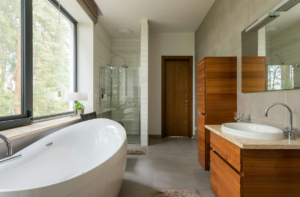Wireless Communication Protocols for Smart Homes
One of the main things which make a smart home so convenient is the fact that you can communicate with every gadget remotely. This is the perfect setting for anyone who tends to multitask a lot, or doesn’t have time to manage each device remotely. This makes your smart home experience significantly better, but how do you actually communicate with your gadgets?
The reason we are able to communicate remotely to smart homes is due to communication protocols. This is technology which allows you to remotely access any compatible device through its corresponding app in your smartphone or tablet, and it is the main reason why smart homes are so comfortable to live in. Your smart thermostat, wireless doorbells with video or the smart lights around your home can all be managed easily using this way of communication, and there are a few major ones that you should know about. The following are the main communication protocols which you can have for the best operation of your smart home.
Wi-Fi
Most smart homes rely on the internet to function. Wi-Fi is the most popular way through which you can connect to and communicate with your smart home, since it is the most commonly available. Every home already has a Wi-Fi connection, which makes this very convenient.
Using a Wi-Fi connection for your smart home is easy, affordable and requires no extra effort. Most smart home products support Wi-Fi connectivity, which is one of the main benefits of this communication protocol – however, it certainly has its disadvantages. With a Wi-Fi connection, you will usually require constant connection to power. This makes it unreliable in case of a power outage. It can also slow down or be affected by a number of different factors, including the type of connection and distance from the devices receiving the signals.
Bluetooth
Possibly the second most popular communication protocol would have to be Bluetooth. Bluetooth connections are well-known and have been used for a lot more than smart homes over the years. Most people are aware of it and know how to use it, which makes it an excellent second option instead of Wi-Fi.
Bluetooth is a personal area network which can be used to connect wireless devices such as smart speakers and headphones to your smartphone, and is very easy to use. As far as security goes, Bluetooth can keep your home fairly safe. Its limited range is both a blessing and a curse, since even though it adds to your home’s security, devices in a larger home may have more trouble connecting. If you have a large home which is fully automated, this may not be the best option for all or most of your devices.
ZigBee
This wireless communication protocol is much less popular, but is still a good option if your device is compatible with it. ZigBee may be seen as a fancier protocol, since it focuses primarily on security, the kind used in banks and such. It uses a mesh network as well, which makes it very responsive and reliable. When you own a smart home, one of the most important things is for your devices to respond immediately. This is because you cannot afford any kind of lag in case of an emergency. There are certain devices in homes, such as security cameras and smoke detectors which need to be constantly monitored, and you must receive real-time updates.
ZigBee supports a wide range of devices, and once you select the right gadgets for your smart home, it should be very simple to set up and use. If you don’t want to rely on Wi-Fi or deal with the limitations of Bluetooth, ZigBee is a great backup.
Nest
If you own a smart home, you have most likely heard of Nest. This is a collection of smart products which requires an existing Wi-Fi connection, but is important to mention due to its compatibility with a lot of smart home gadgets. A number of lights, thermostats and speakers can be controlled using the Nest network, and some of the most popular smart gadgets are from this line of products.
Knowing about Nest is important since you most likely have Nest devices already in your home. These gadgets are very well-known, and if you tend to buy the most reliable gadgets for your home, you are very likely to have gadgets which support this protocol. Creating a Nest environment in your home will allow you to have a coherent, well organized smart home that will become even easier to manage, since you will be able to control most of it through one source. As a homeowner, you may want to consider this range; this is becauseNest products are reliable, allow easy monitoring and can significantly improve your smart home experience compared to their cheaper counterparts.
Conclusion
Being able to access every device in your smart home is very important for any homeowner. It is what ensures your peace of mind and allows you to create the best possible home for yourself. If your devices operate using Wi-Fi and the connection isn’t stable, it could result in inefficiency and inconvenience, which would ruin the whole point of having a smart home. You can avoid this by choosing a stronger connection, or even a different communication protocol. This guide can help you understand your options better, so you can choose your devices accordingly for the best smart home experience.







